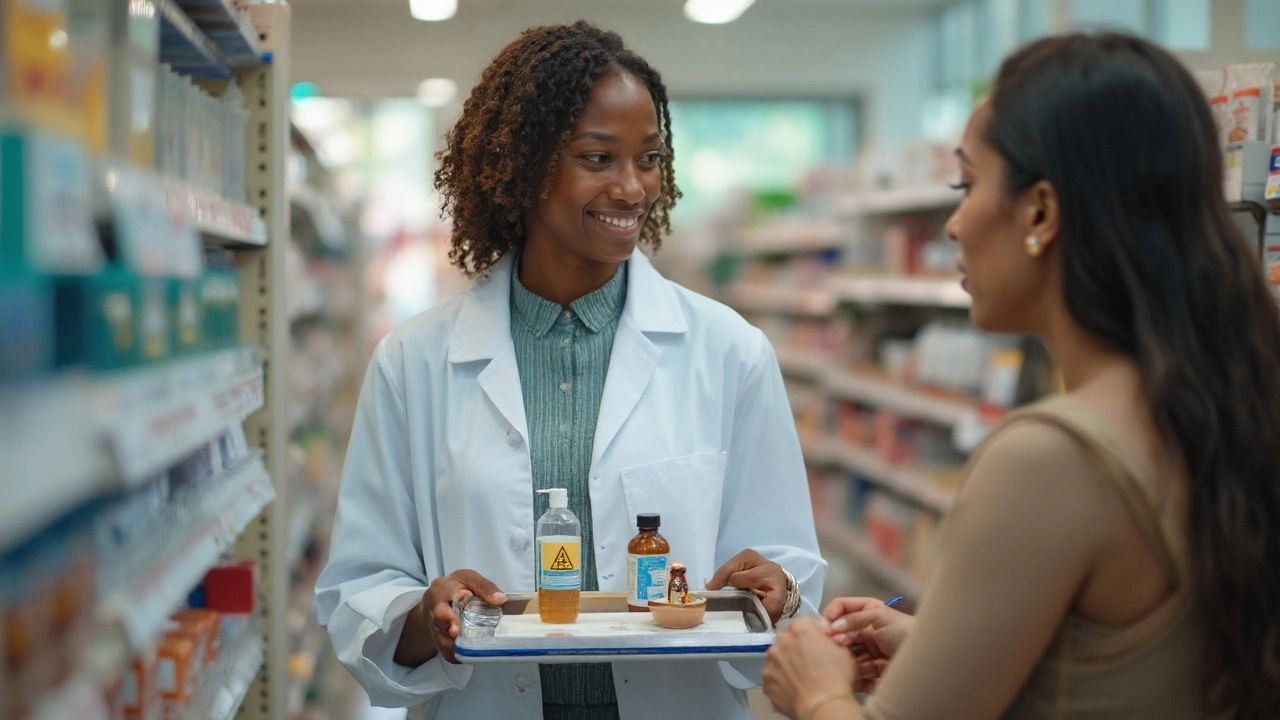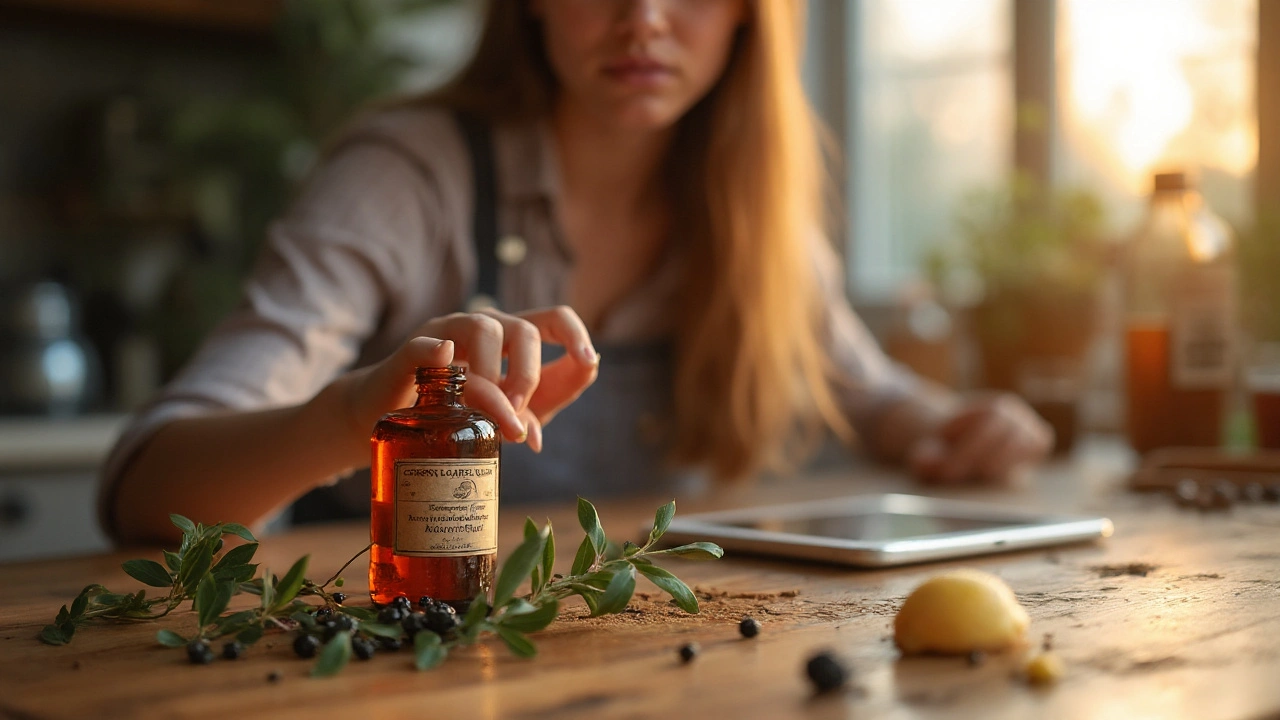The promise sounds irresistible: a single plant water that calms nerves, helps sleep, smooths digestion, and clarifies skin. But here’s the hard truth-cherry laurel water is not a miracle dietary supplement. It’s a cyanide-releasing distillate from Prunus laurocerasus (also called common laurel), and in modern toxicology and pharmacy texts, it’s treated as poisonous, not as a wellness product. If you clicked in hoping for an easy win, you deserve straight talk, clear steps, and safer alternatives that actually have evidence behind them.
What you’ll get here: a no-hype breakdown of what cherry laurel water really is, why “natural” doesn’t mean safe, how to spot dangerous labels fast, and the swaps that deliver the same goals-sleep, calm, digestion, skin-without flirting with cyanide.
- TL;DR
- Cherry laurel (Prunus laurocerasus) leaves and seeds contain cyanogenic glycosides that can release hydrogen cyanide. Laurel water is a distillate; it is not recognized as a safe dietary supplement by modern regulators or pharmacopoeias.
- No high-quality human evidence shows benefits that outweigh the poisoning risk. Poison control centers and toxicology texts flag laurel-derived waters as hazardous (EFSA, WHO, national poison centers).
- If a bottle lists laurocerasus, “prussic acid,” hydrocyanic acid, or bitter almond/cherry laurel distillate, do not ingest it.
- Want the benefits people hope for (sleep, calm, digestion, skin)? Safer, evidence-backed options exist: tart cherry, magnesium glycinate, ginger, peppermint enteric oil, and dermatology-grade topicals.
- Accidental exposure: stop use, do not induce vomiting, seek urgent medical care or call a poison center immediately.
What It Is and Why It’s Not a Supplement
Cherry laurel (Prunus laurocerasus) is an evergreen shrub. Its leaves and seeds contain cyanogenic glycosides-chiefly prunasin and amygdalin-that can release hydrogen cyanide when crushed, chewed, or processed in water. “Laurel water” (sometimes sold as laurocerasus water, bitter almond-type water, or under old apothecary names) is a fragrant distillate historically used in tiny medicinal doses. That history is exactly why today’s safety bodies treat it as a poison: the active principle is cyanide.
Let’s map the claim to reality:
- Claim: “Natural calming, digestive, and skin-clarifying miracle.”
- Reality: Aqueous or distilled preparations from Prunus laurocerasus can liberate cyanide. Modern toxicology warns even small mis-measurements can lead to serious poisoning. National and regional poison centers report acute cases when leaves or home-made waters are ingested. Pharmacopoeias have removed or marked laurocerasus waters as obsolete and hazardous.
What do authoritative sources say? The European Food Safety Authority has issued scientific opinions on cyanide in foods and plant products, highlighting risks from cyanogenic glycosides in Prunus species. WHO’s monographs on hydrogen cyanide outline rapid-onset toxicity: headache, vertigo, confusion, nausea, vomiting, rapid breathing, seizures, cardiac instability, and potentially fatal hypoxia. U.S. and EU poison centers routinely caution against Prunus leaf teas and distillates. None of these institutions classify laurocerasus water as a dietary supplement.
Is there evidence of benefit? No clinical trials with modern methods support internal use for sleep, anxiety, digestion, or skin. Historical anecdotes exist, but they come from an era before today’s safety standards and were premised on extremely dilute, pharmacist-controlled preparations. In 2025, a product sold online as “cherry laurel water” can vary wildly in cyanide content, with no premarket testing. That’s not a risk you can dose around at home.
Key practical point: if a label or web listing includes any of the following, step away:
- “Prunus laurocerasus,” “laurocerasus water,” “laurel water,” “leaf distillate,” “bitter almond water,” or “prussic acid essence.”
- Ingredient clues: “amygdalin,” “prunasin,” “hydrocyanic acid,” “HCN,” “prussic acid.”
- Therapeutic-like claims without modern references: “miracle cure,” “poison-free detox,” “old apothecary secret.”
Why “but it’s natural” doesn’t help: cyanide from Prunus seeds/leaves is just as biologically active as lab cyanide. Your mitochondria don’t care about marketing copy; cyanide blocks cellular respiration either way.
Bottom line: if you’re after calm, sleep, gut comfort, or better skin, the risk-to-benefit math on laurocerasus water flunks. Good news: you have safer routes that do work.

Safer Paths to the Same Goals (With Doses, Evidence, and How-To)
People chase cherry laurel water for four main outcomes: sleep/calm, smoother digestion, skin clarity, and “detox” or bloat relief. Below are alternatives with a saner safety profile and decent evidence. Always check with your clinician if you have conditions, take meds, or are pregnant/breastfeeding.
Sleep and calm
- Tart cherry (Montmorency) juice or capsules: Small trials report modest sleep improvements, likely via melatonin and anthocyanins. A practical approach: 240 mL juice twice daily or 480 mL once in the evening for 1-2 weeks; or a standardized extract capsule following the label (commonly 500-1000 mg/day). Source examples: peer-reviewed sleep studies and sports recovery trials.
- Magnesium glycinate: Often well-tolerated. Typical sleep support dose: 200-400 mg elemental magnesium in the evening. Avoid if you have severe kidney disease. Evidence: RCTs and reviews suggest benefit for sleep quality and anxiety in some groups.
- L-theanine: 100-200 mg 1-2 times daily may support relaxation without next-day fog. Evidence: controlled trials in stress and attention.
Digestion and bloat
- Ginger (Zingiber officinale): 500-1000 mg standardized extract before meals can help nausea and functional dyspepsia. Evidence: multiple RCTs and meta-analyses.
- Peppermint oil (enteric-coated): 180-225 mg, 2-3 times daily for IBS-related discomfort. Evidence: numerous controlled trials; enteric coating reduces reflux issues.
- Diet moves that work: slow down eating, walk 10 minutes after meals, test a 2-4 week low-FODMAP trial with a dietitian if you have IBS.
Skin clarity (acne-prone)
- Topicals with proven actives: adapalene 0.1% gel nightly as tolerated; benzoyl peroxide 2.5-5% in the morning. These are first-line in dermatology guidelines.
- Niacinamide 2-5% serum: helps redness and oil control with a very low irritation profile.
- Diet tweaks: focus on steady blood sugar-swap ultra-processed snacks for protein-plus-fiber (yogurt with berries, hummus with carrots), which can reduce acne flares in some people.
“Detox” and general wellness
- Hydration and fiber are the quiet heroes. Aim for 25-38 g fiber/day (vegetables, legumes, oats, chia) and 2-3 liters of water, adjusted to your size and climate.
- If you drink alcohol, plan true breaks. Your liver’s detox pathways need time, not mystery waters.
| Goal | Safer alternative | Evidence snapshot | Typical dose range | Notes |
|---|---|---|---|---|
| Sleep quality | Tart cherry (Montmorency) | Small RCTs show modest improvements in sleep time/efficiency | 240 mL juice 1-2x/day or standardized extract 500-1000 mg/day | Watch sugars in juice; capsules are lower-sugar |
| Sleep & calm | Magnesium glycinate | Mixed but positive trials for anxiety/sleep in some groups | 200-400 mg elemental Mg nightly | Avoid high doses with kidney disease; may loosen stools |
| Relaxation | L-theanine | Human trials show reduced stress response and improved focus | 100-200 mg 1-2x/day | Non-sedating; can pair with low-dose caffeine earlier in day |
| Nausea/dyspepsia | Ginger extract | Meta-analyses support use for nausea and functional dyspepsia | 500-1000 mg before meals | May thin blood at high doses; check meds |
| IBS-related pain | Enteric-coated peppermint oil | Multiple RCTs show benefit vs placebo | 180-225 mg, 2-3x/day | Enteric coating minimizes reflux/heartburn |
| Acne control | Adapalene + benzoyl peroxide | Dermatology guideline first-line combo | Adapalene 0.1% nightly; BPO 2.5-5% AM | Start slow; moisturize to reduce irritation |
Why these beat laurocerasus water: they have human data, predictable dosing, and far better safety profiles. None are “miracles,” but together they handle 80% of the goals people chase with risky, old-time remedies.

Protect Yourself: Spot Bad Labels, Use Simple Rules, and Know What to Do
Quick decision rules (print-worthy)
- If a product contains laurocerasus, bitter almond, or “prussic acid” distillate, do not ingest it.
- If a seller calls something a “miracle” and can’t provide modern, peer-reviewed human data, pass.
- Old apothecary names ≠ safe. Many were retired for safety reasons.
- For any “plant waters,” assume variable strength. If dosing errors can be fatal, it’s not a home supplement.
How to read the label in 30 seconds
- Scan the Latin name. Prunus laurocerasus? That’s a stop sign.
- Hunt for cyanide clues: amygdalin, prunasin, hydrocyanic acid, HCN, prussic acid.
- Check the claims. Words like “miracle,” “cures,” “detoxifies poisons” are red flags under supplement rules in the U.S. and EU.
- Look for batch/lot, manufacturer, and third-party testing. No testing? No trust.
Why regulation won’t save you here
In 2025, supplements in many regions (including the U.S.) are not pre-approved before sale. The FDA can act only after harm is reported. EFSA and national agencies issue opinions and limits on cyanide in foods, but niche online sellers can slip through. Your best defense is knowing what to avoid.
But I saw five-star reviews-doesn’t that count?
Reviews can be gamed. More important: the mechanism. If the active principle relies on cyanide release, you don’t need more anecdotes; you need distance from the product. Poisoning doesn’t care about star ratings.
What symptoms should trigger urgent help?
- Within minutes to hours: headache, dizziness, confusion, nausea, vomiting, a weird almond-like smell on breath (not always present), fast breathing, then slowing, low blood pressure, or seizures.
- Do not induce vomiting. Get urgent medical care or contact a poison center immediately. Timing matters with cyanide.
Mini‑FAQ
- Is cherry laurel the same as culinary bay laurel? No. Cherry laurel is Prunus laurocerasus (cyanogenic). Culinary bay leaves come from Laurus nobilis (not a cyanogenic Prunus). Don’t mix them up.
- Are cherry laurel fruits edible? Some regions eat the ripe fruits of related species, but seeds and leaves remain a cyanide risk. Identification errors are common. Don’t DIY foraging unless you’re trained.
- Is there any safe dose of laurocerasus water? This isn’t like caffeine. Cyanide’s margin of error is narrow, and product strength can vary. Modern pharmacy has retired this preparation for internal use.
- Could topical use be safe? Don’t assume. Skin can absorb small molecules, and inhalation of vapors is a risk. There’s no good reason to use it when better options exist.
- What about bitter almond oil? Genuine bitter almond oil is another cyanide-associated product unless it is specifically detoxified by reputable manufacturers. Many “almond oils” on shelves are sweet almond and safe for skin, but always read the INCI and supplier documentation.
Simple checklists
Quick safety checklist before buying any plant water or extract
- Latin name listed? If Prunus laurocerasus, walk away.
- Third-party tested? Look for ISO-accredited labs or widely recognized seals.
- Batch and lot number present? Traceability matters.
- Clear dose with units? “A few drops” is not a dose when toxicity is plausible.
- Evidence claim with citations? Marketing fluff doesn’t count.
Swap cheat-sheet (keep this on your phone)
- Sleep/calming: tart cherry or magnesium glycinate → avoid laurocerasus water
- Digestion/bloat: ginger or enteric peppermint → avoid leaf teas from Prunus species
- Skin: adapalene/benzoyl peroxide → avoid fragrant plant waters marketed as cure-alls
Scenarios and trade‑offs
- “I want a plant-based sleep aid without grogginess.” Try tart cherry or L-theanine first. If you want stronger, discuss low-dose doxylamine or controlled-release melatonin with your clinician.
- “My gut is cranky, and I’m tempted by herbal tonics.” Start with ginger/peppermint and diet timing. If symptoms persist, get evaluated for H. pylori, celiac, SIBO, or gallbladder issues. Herbs can’t fix structural problems.
- “My skin keeps breaking out.” A consistent topical routine beats ingesting risky waters. If you have nodules or scarring, see a dermatologist early.
Credible sources to trust going forward
- EFSA opinions on cyanide in foods and botanical preparations
- WHO Environmental Health Criteria for hydrogen cyanide
- National poison control center guidance and annual reports
- NIH Office of Dietary Supplements fact sheets on safe nutrients (e.g., magnesium)
- Dermatology and gastroenterology clinical guidelines
This article is for education, not medical diagnosis or treatment. If you’ve already used a laurocerasus product and feel off-even slightly-get help now. With cyanide, minutes matter.
Next steps and troubleshooting (by situation)
- If you already bought a bottle labeled laurocerasus or laurel water: Do not open it. Do not taste it. Contact the seller for a refund citing safety concerns. If disposal guidance isn’t clear, ask your local pharmacy or waste authority about hazardous liquids.
- If you already ingested some and feel unwell: Stop. Do not induce vomiting. Seek urgent care or call a poison center. Bring the bottle; first responders need the label.
- If you’re just curious and want something gentle and safe: Start with one change at a time-magnesium glycinate at night or a two-week tart cherry trial for sleep; ginger before larger meals for digestion; a simple acne routine for skin. Track in a notes app: dose, time, effect, and any side effects.
- If a friend swears by cherry laurel water: Share the mechanism in one sentence-“It can release cyanide”-and point them to EFSA/WHO guidance. Don’t argue the reviews; argue the biochemistry.
- If you sell wellness products: Remove any laurocerasus or cyanogenic Prunus waters from internal-use listings. Substitutes with actual evidence are easier to support and safer for customers.
A final practical note from a label-obsessed health writer: the fastest safety filter I use is the Latin name. If it says Prunus laurocerasus, I don’t bargain with myself. I close the tab and move on to something that helps more than it harms.


Melania Rubio Moreno
September 6, 2025 AT 18:25Gaurav Sharma
September 6, 2025 AT 18:48Shubham Semwal
September 7, 2025 AT 14:39Sam HardcastleJIV
September 9, 2025 AT 11:06Mira Adam
September 11, 2025 AT 03:07Miriam Lohrum
September 11, 2025 AT 19:55archana das
September 13, 2025 AT 14:01Emma Dovener
September 13, 2025 AT 20:50Sue Haskett
September 14, 2025 AT 08:21Jauregui Goudy
September 14, 2025 AT 10:02Tom Shepherd
September 15, 2025 AT 22:31Rhiana Grob
September 17, 2025 AT 03:52Frances Melendez
September 18, 2025 AT 18:46Jonah Thunderbolt
September 19, 2025 AT 10:23Rebecca Price
September 19, 2025 AT 11:02shawn monroe
September 20, 2025 AT 04:21marie HUREL
September 20, 2025 AT 19:04Leo Adi
September 20, 2025 AT 21:04neville grimshaw
September 22, 2025 AT 03:30Carl Gallagher
September 23, 2025 AT 18:52